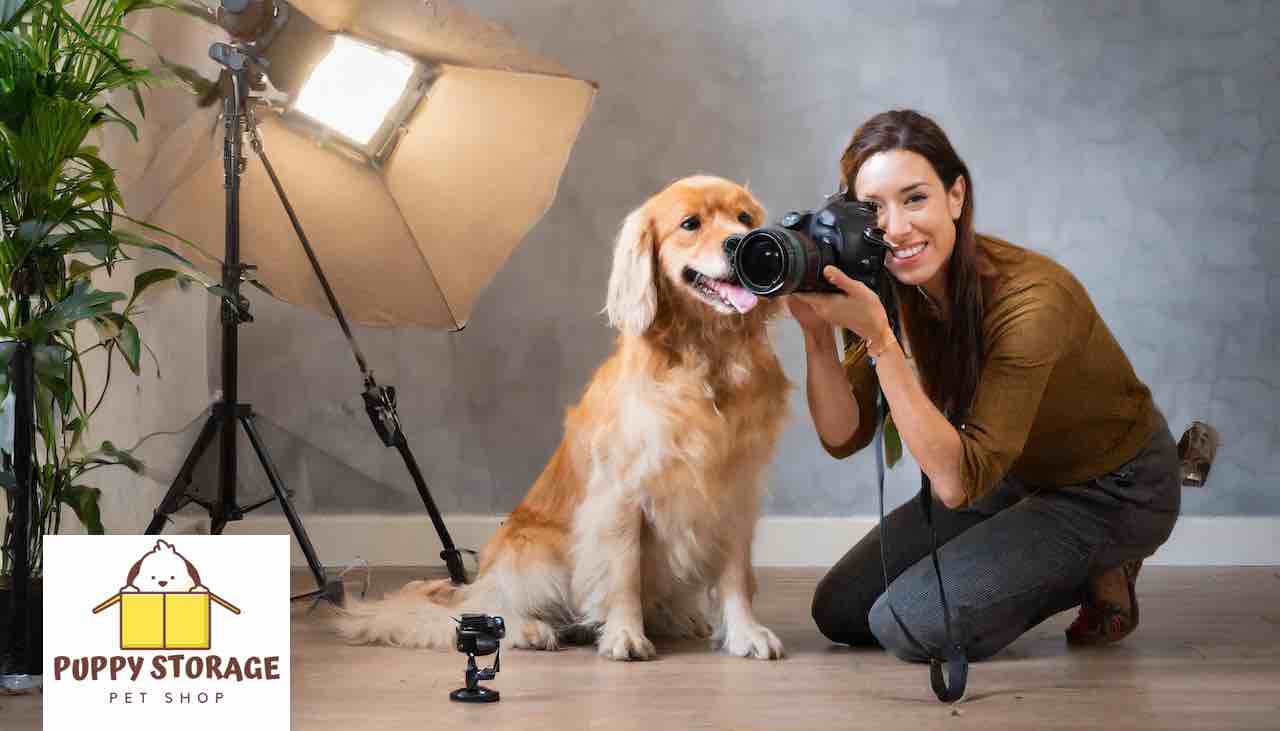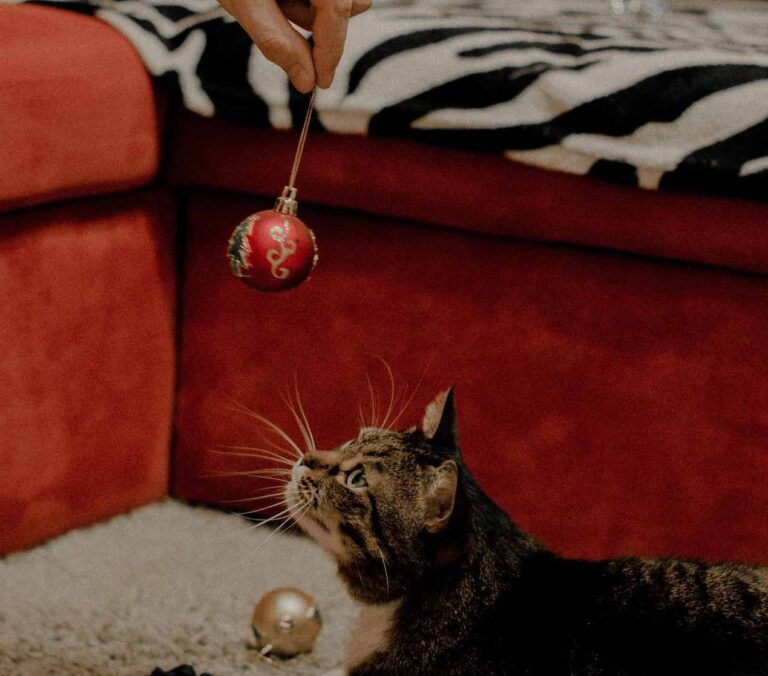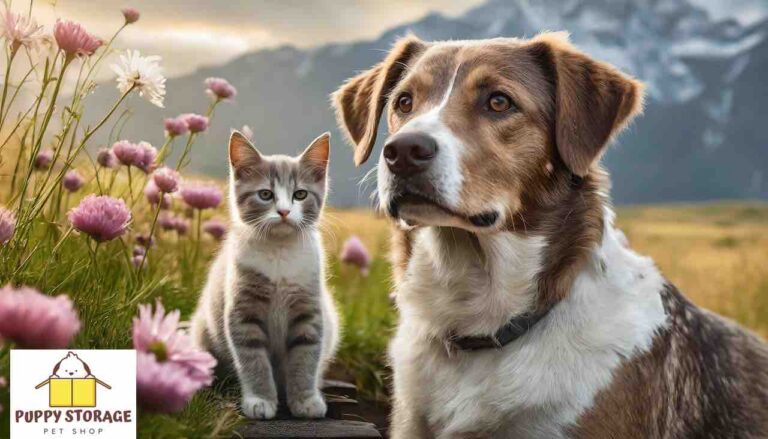Mastering the Art of Pet Photography
Ever wondered what goes into the bowl of your furry friend?
In the age of social media and digital photography, pets have become cherished members of our families, and capturing their endearing moments has become a beloved pastime for many pet owners. From playful antics to heartwarming expressions, our furry friends possess a charm and personality that deserve to be immortalized in photographs. In this blog, we will explore the art of pet photography, delving into techniques, tips, and creative ideas to help you capture the essence of your beloved companions in stunning portraits. Whether you’re a seasoned photographer or a novice with a smartphone, join us as we embark on a journey to celebrate the unique beauty and character of our four-legged friends through the lens of a camera.
Understanding Your Subject
Pets, like humans, have unique personalities, quirks, and traits that define who they are. To capture authentic and expressive photographs of your furry friend, it’s essential to delve deep into understanding their individuality. Here’s a guide to exploring techniques for getting to know your pet’s personality, behavior, and preferences:
- Spend Quality Time Together:
The first step in understanding your pet is to spend quality time together. Engage in activities that your pet enjoys, whether it’s playing fetch, going for walks, or simply cuddling on the couch. Observe their behavior, reactions, and body language in various situations to gain insight into their personality.
- Recognize Their Preferences:
Just like humans, pets have likes and dislikes. Pay attention to the things that make your pet happy, whether it’s a favorite toy, a particular treat, or a special spot they love to nap in. Understanding their preferences will help you create a comfortable and enjoyable photography environment.
- Respect Their Boundaries:
While it’s important to bond with your pet, it’s equally essential to respect their boundaries. Every pet has their comfort level and tolerance for certain activities. Pay attention to signs of stress or discomfort, such as ear flattening, tail tucking, or vocalizations, and adjust your approach accordingly to ensure a positive experience for your pet.
- Capture Everyday Moments:
Authentic pet photography isn’t just about posed portraits; it’s about capturing the essence of your pet’s everyday life. Take candid shots of your pet during their daily routines, whether they’re lounging in the sun, playing with their favorite toy, or greeting you at the door. These spontaneous moments often reflect your pet’s true personality and charm.
- Experiment with Different Settings:
Pets can behave differently in various environments and situations. Experiment with different settings, such as indoors, outdoors, day, and night, to see how your pet responds. Some pets may feel more relaxed and playful outdoors, while others may prefer the comfort of familiar indoor surroundings.
- Be Patient and Observant:
Understanding your pet’s personality is an ongoing process that requires patience and keen observation. Take the time to observe your pet’s behavior in different contexts and situations, and be open to learning and adapting your approach to better suit their needs and preferences.
By investing time and effort into understanding your pet’s personality, behavior, and preferences, you’ll be better equipped to capture authentic and expressive photographs that truly reflect the unique essence of your furry friend. So, grab your camera, get to know your pet, and embark on a photographic journey filled with love, laughter, and unforgettable moments.
Composition and Framing
Creating visually appealing and engaging pet portraits requires more than just pointing and shooting; it involves understanding the principles of composition and framing. Here’s a deep dive into mastering composition rules and framing techniques to elevate your pet photography:
- Rule of Thirds:
The rule of thirds is a fundamental principle in photography that involves dividing the frame into thirds both horizontally and vertically, resulting in a grid of nine equal parts. Position key elements, such as your pet’s eyes or face, along these grid lines or at their intersections to create a balanced and visually pleasing composition.
- Leading Lines:
Utilize leading lines in your composition to draw the viewer’s eye towards your pet or create a sense of depth and movement in the image. Leading lines can be natural elements like paths, fences, or branches, guiding the viewer’s gaze towards the main subject – your pet.
- Symmetry and Balance:
Seek symmetry and balance in your pet portraits by framing your subject centrally or evenly distributing visual elements within the frame. Symmetrical compositions can evoke a sense of harmony and stability, enhancing the overall aesthetic appeal of your photographs.
- Fill the Frame:
Experiment with filling the frame with your pet to create intimate and impactful portraits. Get up close and personal, focusing on capturing the details of your pet’s fur, eyes, or expressions. This technique can create a powerful connection between the viewer and your pet, emphasizing their presence and personality.
- Use of Negative Space:
Negative space refers to the empty areas surrounding the main subject in an image. Incorporating negative space can add visual interest and emphasis to your pet portraits, allowing your subject to stand out against a clean and uncluttered background. Experiment with minimalist compositions to evoke a sense of tranquility and focus attention on your pet.
- Consider the Angle:
Explore different angles and perspectives when photographing your pet to add variety and depth to your compositions. Get down to your pet’s eye level for an intimate and engaging viewpoint, or experiment with shooting from above to capture interesting patterns and textures in their fur.
- Background Selection:
Pay attention to the background when composing your pet portraits, ensuring it complements rather than distracts from your subject. Choose backgrounds that are simple, uncluttered, and free from distractions, allowing your pet to take center stage. Consider using natural environments like parks, gardens, or beaches for a timeless and organic backdrop.
- Depth of Field:
Experiment with depth of field to create visual interest and separation between your pet and the background. Use a wide aperture (low f-stop) to achieve a shallow depth of field, blurring the background and drawing attention to your pet’s sharp and focused features. Alternatively, use a narrow aperture (high f-stop) to maintain sharpness throughout the scene, ideal for capturing detailed environmental portraits.
- Candid Moments vs. Posed Shots:
Balance candid moments with posed shots to capture the full range of your pet’s personality and expressions. While posed shots allow for control over composition and framing, candid moments often reveal the genuine charm and character of your pet. Be ready to capture spontaneous interactions, playful antics, or quiet moments of reflection to add depth and authenticity to your pet portraits.
- Experiment and Have Fun:
Above all, don’t be afraid to experiment and have fun with your pet photography. Embrace creativity, spontaneity, and serendipity as you explore different composition rules, framing techniques, and artistic styles. Every pet is unique, and every photograph tells a story – so let your imagination soar and capture the essence of your furry friend in breathtaking portraits.
Mastering composition and framing in pet photography is a journey of exploration and discovery, filled with endless opportunities to create captivating and meaningful images. By applying these composition rules and framing techniques, you’ll elevate your pet portraits to new heights, capturing the essence of your beloved companions with artistry and grace. So, grab your camera, unleash your creativity, and embark on a photographic adventure that celebrates the beauty and charm of your furry friends.
Lighting and Exposure
Lighting is one of the most critical elements in photography, and it plays a crucial role in capturing stunning pet portraits. Understanding how different lighting conditions impact your images and employing techniques to utilize natural and artificial light effectively can elevate the quality of your pet photography. Here’s an in-depth exploration of lighting and exposure techniques to enhance your pet portraits:
- Natural Light vs. Artificial Light:
Natural light, such as sunlight, offers soft, diffused illumination that can beautifully enhance your pet’s features. When shooting indoors, utilize window light or doors to let in natural light and illuminate your pet’s fur and eyes. Alternatively, artificial light sources like lamps or studio lights can provide consistent and controllable lighting for indoor photography sessions.
- Golden Hour Magic:
The golden hour, occurring shortly after sunrise or before sunset, offers soft, warm, and flattering light ideal for pet photography. During these times, the angle of the sun creates long shadows and a golden hue that adds depth and dimension to your images. Schedule outdoor photo sessions during golden hour for stunning, ethereal portraits of your pet bathed in golden light.
- Diffusing Harsh Light:
When shooting in bright sunlight, harsh shadows and harsh highlights can detract from your pet’s features. Use diffusers or translucent materials to soften and diffuse sunlight, creating a more flattering and even lighting effect. Alternatively, seek shaded areas or shoot during overcast days to avoid harsh shadows and achieve soft, natural-looking light.
- Backlighting for Drama:
Experiment with backlighting to add drama and dimension to your pet portraits. Position your pet between the light source and the camera, allowing the light to create a halo effect around their silhouette. Backlighting can create striking rim lighting, highlight fur texture, and add a magical glow to your images, enhancing their visual impact.
- Fill Light for Balance:
In situations where natural light is insufficient or uneven, use fill light to balance the exposure and illuminate shadowed areas. Reflectors, white foam boards, or even smartphone flashlights can serve as fill lights to brighten your pet’s features and achieve a more balanced exposure. Position fill light sources strategically to minimize harsh shadows and create a pleasing lighting effect.
- Avoiding Overexposure:
Proper exposure is essential for capturing detailed and well-balanced pet portraits. Avoid overexposure by adjusting your camera settings to maintain highlight detail, especially in bright lighting conditions. Use exposure compensation or manual exposure mode to prevent blown-out highlights and preserve texture and color in your pet’s fur and features.
- Embracing Low Light Scenarios:
Don’t shy away from photographing your pet in low light conditions, such as indoors or during the evening. Embrace the soft, moody ambiance of low light settings, and experiment with slower shutter speeds, higher ISO settings, and wider apertures to capture atmospheric and emotive portraits of your pet in dimly lit environments.
- Using Reflectors and Bounce Boards:
Reflectors and bounce boards are valuable tools for manipulating light and enhancing your pet portraits. Position reflectors opposite the main light source to bounce light back onto your pet, filling in shadows and creating a flattering, even lighting effect. Experiment with different reflector sizes and materials to achieve the desired intensity and quality of light.
- Creative Lighting Effects:
Get creative with lighting effects to add visual interest and flair to your pet portraits. Experiment with colored gels, fairy lights, or DIY light modifiers to create unique and artistic lighting effects that reflect your pet’s personality and style. Don’t be afraid to think outside the box and push the boundaries of traditional lighting techniques to create memorable and captivating images.
- Practice, Experiment, and Learn:
Mastering lighting and exposure in pet photography is an ongoing journey of practice, experimentation, and learning. Take the time to study different lighting conditions, experiment with various techniques and equipment, and analyze the results of your photoshoots to refine your skills and develop your unique photographic style. With dedication, patience, and a keen eye for light, you’ll unlock the secrets of stunning pet portraits that truly shine.
By understanding how lighting conditions impact your pet photography and employing techniques to utilize natural and artificial light effectively, you can elevate the quality of your pet portraits and capture stunning images that showcase your furry friend’s beauty and personality in the best possible light. So, grab your camera, embrace the magic of light, and embark on a photographic journey filled with creativity, inspiration, and breathtaking moments with your beloved pet.
Connecting with Your Pet
Establishing a strong bond and rapport with your pet is key to capturing authentic and expressive portraits. By creating a comfortable and trusting environment, you can elicit natural expressions, poses, and interactions that truly reflect your pet’s personality and charm. Here’s a detailed exploration of strategies for connecting with your pet during photography sessions:
- Establish Trust and Comfort:
Begin by establishing trust and comfort with your pet before diving into the photography session. Spend some time engaging in activities your pet enjoys, such as playing, cuddling, or offering treats. This helps create a positive association with the photography experience and puts your pet at ease.
- Use Positive Reinforcement:
Utilize positive reinforcement techniques, such as treats, praise, and affection, to encourage desired behaviors and interactions during the photoshoot. Reward your pet for following cues, posing naturally, or maintaining eye contact with the camera. Positive reinforcement creates a rewarding and enjoyable experience for your pet, strengthening your bond in the process.
- Engage in Interactive Play:
Incorporate interactive play into your photography sessions to spark natural expressions and interactions with your pet. Use toys, props, or activities that your pet loves, such as fetch, tug-of-war, or chasing bubbles, to capture dynamic and engaging photos. Interactive play not only keeps your pet entertained but also helps capture their playful and energetic personality on camera.
- Follow Your Pet’s Lead:
Allow your pet to dictate the pace and direction of the photoshoot by following their cues and behaviors. Pay attention to their body language, facial expressions, and energy levels, and adapt your approach accordingly. If your pet shows signs of stress or discomfort, take a break, reassess the situation, and approach the photoshoot with patience and understanding.
- Capture Candid Moments:
Embrace spontaneous and candid moments during the photoshoot to capture the genuine charm and character of your pet. Instead of forcing posed shots, allow your pet to express themselves naturally through their movements, expressions, and interactions with their environment. Candid moments often result in the most authentic and heartfelt portraits.
- Establish Eye Contact:
Establishing eye contact with your pet can create a powerful connection and convey emotion in your portraits. Get down to your pet’s eye level and engage with them through gentle vocal cues, facial expressions, and eye contact. Establishing a connection through eye contact helps create a sense of intimacy and trust between you and your pet, resulting in emotive and impactful photographs.
- Incorporate Scent and Familiar Objects:
Use familiar scents or objects, such as favorite toys, blankets, or treats, to create a sense of comfort and familiarity during the photoshoot. Surrounding your pet with familiar scents and objects helps reduce anxiety and stress, allowing them to relax and feel more at ease in front of the camera.
- Be Patient and Observant:
Patience is key when connecting with your pet during photography sessions. Allow ample time for your pet to adjust to the environment, get comfortable with the camera, and express themselves naturally. Be observant of subtle cues and behaviors that indicate your pet’s emotional state, and adjust your approach accordingly to maintain a positive and supportive atmosphere.
- Create a Bonding Ritual:
Establish a bonding ritual or routine that you and your pet can share before each photoshoot. Whether it’s a brief grooming session, a relaxing massage, or a calming walk together, having a pre-shoot ritual can help reinforce your bond and set the stage for a successful and enjoyable photography experience.
- Practice Patience and Persistence:
Building a strong connection with your pet takes time, patience, and persistence. Don’t get discouraged if your pet doesn’t cooperate or respond as expected right away. Continue to nurture your relationship, reinforce positive behaviors, and celebrate small victories along the way. With patience and persistence, you’ll deepen your bond with your pet and capture breathtaking portraits that reflect their unique personality and spirit.
By implementing these strategies for connecting with your pet during photography sessions, you’ll create a supportive and enriching environment that fosters trust, comfort, and authentic expression. Through patience, positive reinforcement, and genuine interactions, you’ll capture stunning portraits that celebrate the beauty, charm, and individuality of your beloved pet. So, grab your camera, connect with your pet, and embark on a photographic journey filled with love, laughter, and unforgettable moments together.
Editing and Post-Processing
Editing and post-processing are essential steps in the journey of creating stunning pet photographs. By harnessing the power of editing software and mastering various techniques, you can enhance and refine your images to showcase your pet’s beauty and personality in the best possible light. Here’s a deep dive into the world of editing and post-processing techniques for pet photography:
- Color Correction:
Begin by adjusting the color balance and temperature to ensure accurate and natural-looking tones in your pet photographs. Use tools like white balance adjustments, color sliders, and selective color editing to fine-tune the hues and saturation levels, bringing out the richness and vibrancy of your pet’s fur and surroundings.
- Exposure Adjustment:
Fine-tune the exposure levels to correct any underexposed or overexposed areas in your pet photographs. Utilize exposure adjustment tools like brightness, contrast, and exposure sliders to balance the overall brightness and contrast, ensuring that your pet’s features are well-defined and properly exposed.
- Sharpening and Detail Enhancement:
Enhance the sharpness and clarity of your pet photographs to bring out intricate details and textures in their fur, eyes, and expressions. Use sharpening tools and detail enhancement techniques to selectively sharpen key areas of interest, such as your pet’s eyes and whiskers, while maintaining a natural and realistic appearance.
- Noise Reduction:
Reduce unwanted noise and grain in your pet photographs, especially in low-light or high-ISO images, to achieve smoother and more refined results. Experiment with noise reduction tools and techniques to selectively reduce noise without sacrificing image quality, preserving fine details and textures in your pet’s fur and surroundings.
- Cropping and Composition Refinement:
Refine the composition and framing of your pet photographs through cropping and straightening adjustments. Use cropping tools to remove distractions, reframe the composition, or improve the overall balance and symmetry of the image. Experiment with different aspect ratios and compositions to find the most visually pleasing and impactful presentation for your pet portraits.
- Creative Effects and Filters:
Add artistic flair and personality to your pet photographs by applying creative effects and filters. Experiment with presets, overlays, and artistic filters to enhance mood, evoke emotion, or add a touch of whimsy to your images. Explore vintage, black and white, or cinematic effects to imbue your pet portraits with timeless charm and character.
- Background Enhancement:
Fine-tune the background elements in your pet photographs to create a cohesive and visually pleasing composition. Use tools like selective blurring, cloning, or content-aware fill to remove distractions, clean up cluttered backgrounds, or enhance the focus on your pet’s features. Pay attention to the background elements to ensure they complement rather than compete with your pet’s presence in the image.
- Portrait Retouching:
Perform subtle retouching adjustments to enhance your pet’s appearance and expression in portraits. Use tools like blemish removal, skin smoothing, and eye brightening to eliminate distractions, soften imperfections, and accentuate your pet’s natural beauty. Exercise restraint when retouching to maintain a realistic and authentic portrayal of your pet.
- Batch Processing and Workflow Optimization:
Streamline your editing workflow by utilizing batch processing and automation tools to apply consistent edits across multiple images efficiently. Develop a systematic approach to organizing, editing, and exporting your pet photographs, optimizing your workflow for efficiency and productivity without sacrificing quality or creativity.
- Feedback and Iteration:
Seek feedback and constructive criticism from fellow photographers, mentors, or online communities to refine your editing skills and expand your creative horizons. Embrace the iterative process of editing and post-processing, continuously experimenting with new techniques, styles, and effects to evolve and improve your pet photography.
By mastering editing and post-processing techniques, you can elevate your pet photographs to new heights, transforming ordinary images into extraordinary works of art that capture the essence and beauty of your beloved pets. With attention to detail, creativity, and a passion for storytelling, you’ll create stunning pet portraits that resonate with emotion, charm, and timeless appeal. So, dive into the world of editing, unleash your creativity, and let your pet’s personality shine through in every captivating image.
In conclusion, mastering the art of pet photography encompasses a diverse range of skills and techniques, each playing a crucial role in capturing stunning and emotive portraits of our beloved companions. Understanding your subject allows you to delve deep into your pet’s personality, behavior, and preferences, ensuring that each photograph reflects their unique charm and spirit. Composition and framing guide the viewer’s eye and create visually appealing portraits, while mastering lighting and exposure elevates the overall quality and mood of your images.
Connecting with your pet forms the heart of pet photography, fostering a strong bond and rapport that shines through in every photograph. By engaging in interactive play, establishing trust, and following your pet’s lead, you can capture authentic moments that truly capture the essence of your pet’s personality.
Editing and post-processing serve as the final touches in the creative process, allowing you to refine and enhance your pet photographs to perfection. From color correction and exposure adjustment to creative effects and background enhancement, editing techniques help bring your vision to life and create captivating images that resonate with emotion and beauty.
By integrating these key elements—understanding your subject, composition and framing, lighting and exposure, connecting with your pet, and editing and post-processing—you can create pet portraits that not only showcase your technical prowess but also celebrate the unique bond between you and your furry friend. So, grab your camera, embark on a photographic journey filled with creativity and passion, and capture unforgettable moments that will be cherished for years to come.





































